In 2026, Rich Media Ads are transforming digital advertising by offering interactive and engaging formats that go beyond static banners.. Among these online advertising formats, rich media advertising has emerged as a powerful tool for engaging consumers. But what exactly is rich media advertising?
Rich media refers to interactive and dynamic digital advertisements that engage users with a combination of multimedia elements such as video, audio, animation, and interactivity. Unlike static banner ads, rich media ads provide a more immersive experience, allowing users to interact with the content. This interactivity can include actions such as clicking, dragging, hovering, and even engaging with elements in real-time.
The evolution of digital advertising has been rapid, driven by technological advancements and changing consumer behaviors. As users have become more accustomed to rich media content, advertisers have adapted their strategies to create more engaging and effective ads. The importance of rich media advertising in modern marketing cannot be overstated. It not only captures attention but also drives higher engagement rates, leading to improved brand recall and conversion rates.
What are the Best Rich Media Ad Networks?
Rich media ads are interactive digital advertisements that use multimedia elements like video, audio, animation, and dynamic graphics to engage users. Unlike traditional static banner ads, rich media ads allow users to interact with the content through actions such as clicking, hovering, dragging, or playing videos.
These ads create a more immersive experience, making them highly effective for capturing attention, boosting engagement, and improving brand recall. Because of their interactivity, rich media ads often lead to better conversion rates compared to standard display ads.
Types of Rich Media Ads
Rich media ads come in various forms, each offering unique features and benefits. Understanding these types can help advertisers choose the right format for their campaigns.
- Interactive Ads: These ads allow users to engage directly with the content. For example, an interactive quiz or a game can keep users entertained while promoting a brand.
- Video Ads: Combining video content with interactivity, these ads can offer clickable options within the video, allowing viewers to explore products or services while watching.
- Expandable Ads: Initially displayed as a standard banner, these ads can expand to a larger size when hovered over or clicked, revealing additional content, such as images, videos, or product information.
- Floating Ads: These ads appear on top of the content on a webpage and can move as the user scrolls. They are highly visible but can also be intrusive if not designed carefully.
- Gamified Ads: Integrating game-like elements, these ads encourage users to participate actively, fostering engagement and often leading to higher conversion rates.
Benefits of Rich Media Advertising
Rich media advertising offers several advantages that can enhance a brand’s marketing strategy:
- Higher Engagement Rates: Interactive and visually appealing ads tend to capture more attention than static ads, leading to higher engagement rates.
- Enhanced Brand Awareness: The immersive nature of rich media ads can create a lasting impression, increasing brand recognition and recall among consumers.
- Better Conversion Rates: By encouraging interaction and providing more information, rich media ads can lead to improved conversion rates, as users are more likely to take action.
- Improved User Experience: Rich media ads can provide a more enjoyable and informative experience for users, fostering a positive perception of the brand.
Best Rich Media Ad Networks in 2026
Rich media ad networks provide innovative and interactive advertising solutions that enhance user engagement through rich media formats such as video, animation, and interactive content. Here’s a detailed look at 20 of the best rich media ad networks, their features, strengths, and unique offerings.
- EpicAds.Net
- Google Display Network (GDN)
- Sizmek
- AdColony
- Innovid
- Rich Media Ad Network (RMAN)
- TripleLift
- Flurry Ads
- OpenX
- Verizon Media
- PubMatic
- BrightRoll
- Kaltura
- AppNexus
- Taboola
- Criteo
- Vungle
- Adform
- Sharethrough

For Publishers:
EpicAds.Net, founded in 2023, is a next-generation ad platform designed to help webmasters and site owners effectively and securely monetize their traffic.
It is one of the best ad networks for publishers, helping them earn passive income each month through their websites and blogs. With multi-format ad support (Push, InPage, OnClick), traffic back features, ready-made landing pages, and robust anti-fraud protection, publishers can enjoy stable earnings and high traffic fill rates across all popular verticals like Dating, Nutra, Crypto, Gambling, and Sweepstakes.
Weekly payouts start from just $50, and a 5% lifetime referral program rewards you for bringing in new partners. Plus, around-the-clock support and a dedicated account manager ensure you get the help you need, anytime.EpicAdsis our recommended ad network that you can join in 2026.
Payment Details
EpicAds offers flexible and timely payouts to publishers.
- Multiple Payment Methods: PayPal, Wire Transfer, Capitalist, USDT (TRC20)
- Payment Cycles: Weekly & Bi-weekly options
- Minimum Payout Threshold: Just$50
- Terms: Net-7 or Net-15 based on account performance
For Advertisers:
EpicAds.Net is a modern and easy-to-use ad platform that helps advertisers run cost-per-click (CPC) campaigns and get good results all over the world.
You can target your ads by country, city, device, browser, language, and even time of day. The platform gives you full control with tools like microbidding, A/B testing with up to 10 creatives, and quick creative import from EpicSpy.
Campaigns are checked and approved fast, usually in 30 minutes, and your traffic stays safe with built-in anti-fraud protection.
With clear real-time stats, friendly support 24/7, and high-quality traffic for top niches like Dating, Nutra, Sweepstakes, Crypto, and Gambling, EpicAds.Net makes it simple for both new and experienced advertisers to grow their campaigns easily and get the best results.
2. Google Display Network (GDN)
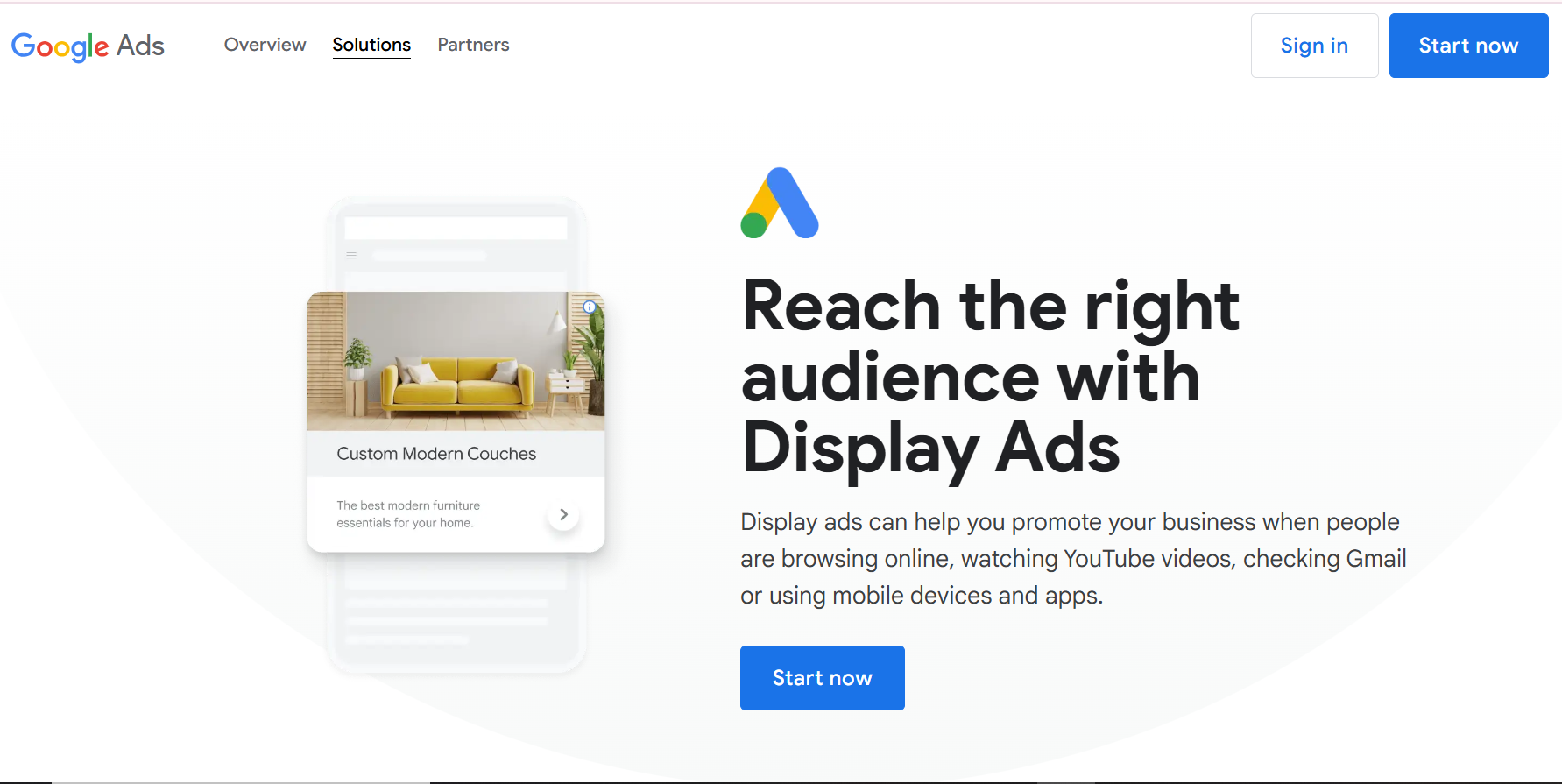
Key Features:
- Offers a variety of rich media ad formats, including responsive display ads and interactive HTML5 ads.
- Advanced targeting options based on demographics, interests, and online behaviors.
- Access to extensive analytics and reporting tools.
Strengths: Massive reach across the web and seamless integration with Google’s advertising ecosystem.
3. Sizmek (Acquired by Amazon)

Key Features:
- Dynamic creative optimization for personalized ad experiences.
- Support for various ad formats, including video, mobile, and rich media.
- Advanced targeting and measurement capabilities.
Strengths: Strong emphasis on data analytics and optimization, enhancing ad performance.
4. Innovid
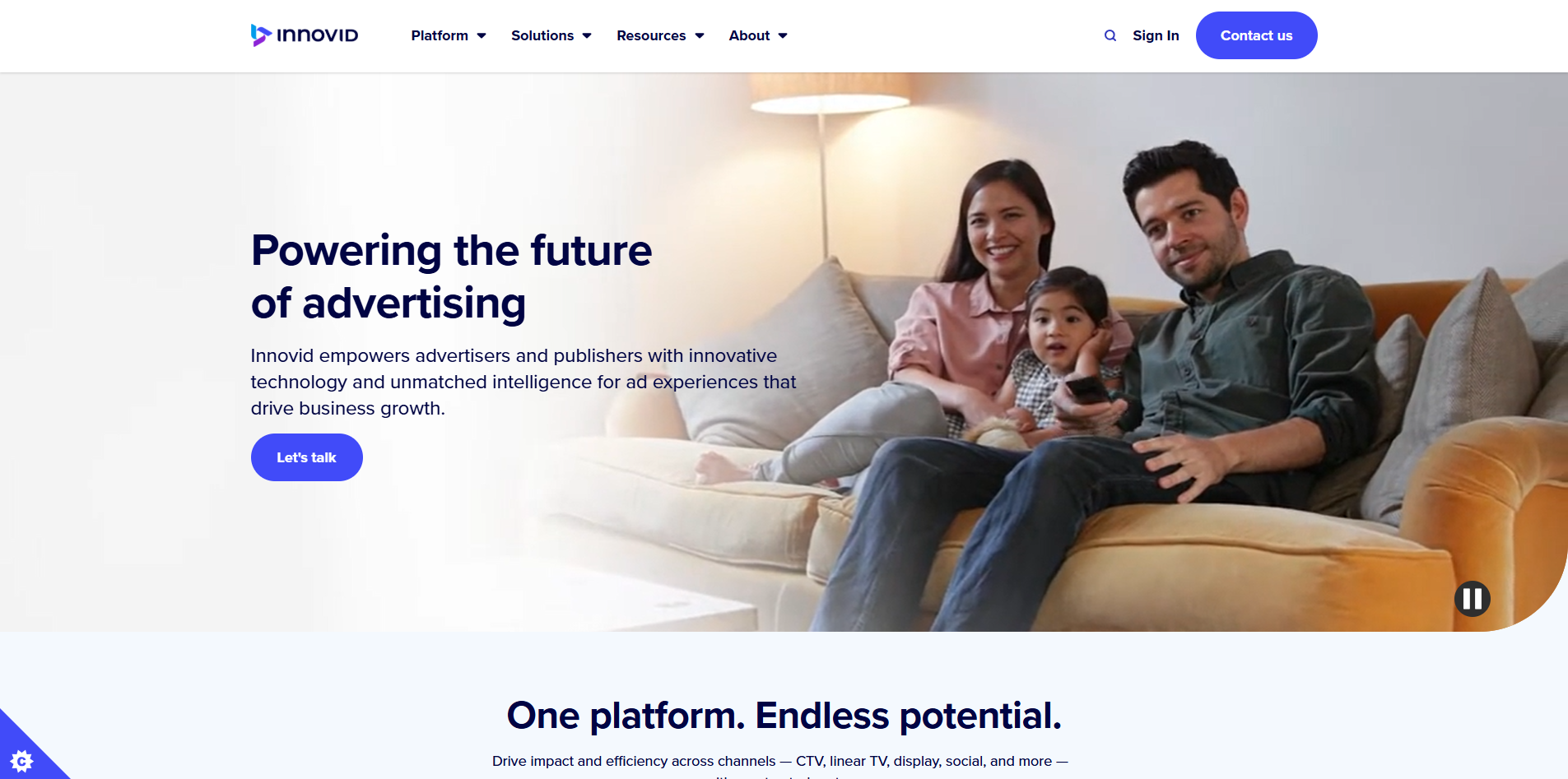
Key Features:
- Dynamic video ads that can include interactive elements and personalization.
- Support for various video ad formats across multiple devices.
- Comprehensive analytics and reporting features.
Strengths: Strong creative capabilities and focus on enhancing video ad interactivity.
5. Rich Media Ad Network (RMAN)

Key Features:
- Supports HTML5 and Flash-based rich media ads.
- Offers in-depth targeting capabilities and analytics.
- Provides tools for creating custom interactive ad formats.
Strengths: Specialization in rich media allows for tailored solutions.
6. TripleLift

Key Features:
- Provides in-image and in-video ad formats.
- Uses computer vision technology for better targeting and placement.
- Strong emphasis on brand safety and transparency.
Strengths: Innovative approach to native advertising enhances user experience.
7. Flurry Ads (Yahoo)

Key Features:
- Engaging ad formats like interstitial and rewarded video ads.
- Advanced analytics for measuring ad performance.
- Seamless integration with mobile applications.
Strengths: Strong presence in mobile advertising with a focus on app monetization.
8. OpenX

Key Features:
- Supports various ad formats, including interactive and video ads.
- Offers advanced targeting and real-time bidding capabilities.
- Robust analytics and reporting tools.
Strengths: Strong programmatic capabilities and extensive inventory.
9. Verizon Media (formerly Oath)
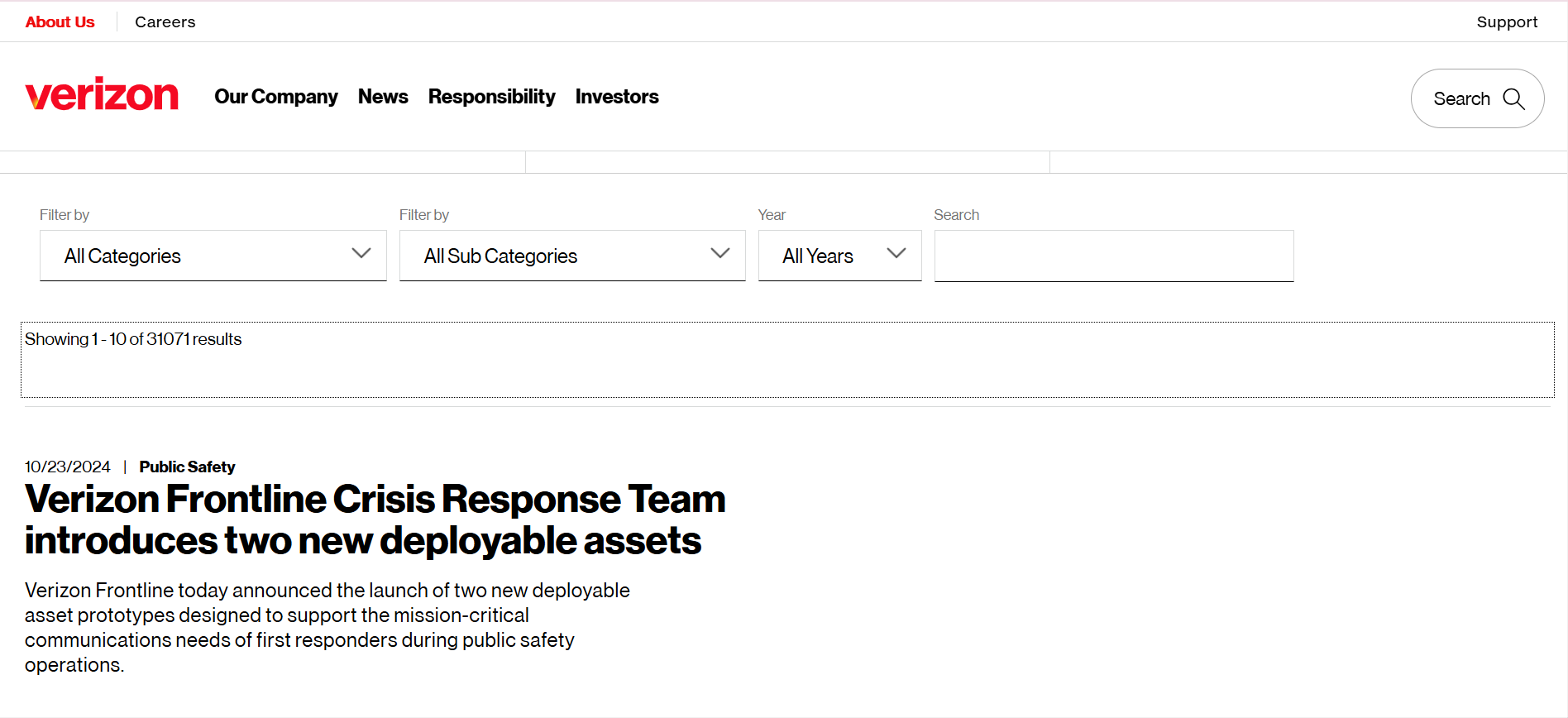
Key Features:
- Rich media and video ad formats across multiple platforms.
- Integrated targeting and analytics tools.
- Access to a large audience across Verizon’s media properties.
Strengths: Wide reach and strong integration with Verizon’s media ecosystem.
10. PubMatic

Key Features:
- Supports various ad formats, including video and interactive ads.
- Advanced analytics and reporting tools.
- Emphasis on transparency and brand safety.
Strengths: Strong focus on publisher monetization and programmatic efficiency.
11. BrightRoll (Yahoo)
Key Features:
- Extensive video ad inventory across various platforms.
- Dynamic video ads with interactive elements.
- Comprehensive analytics and optimization tools.
Strengths: Strong expertise in video advertising and targeting.
12. Kaltura
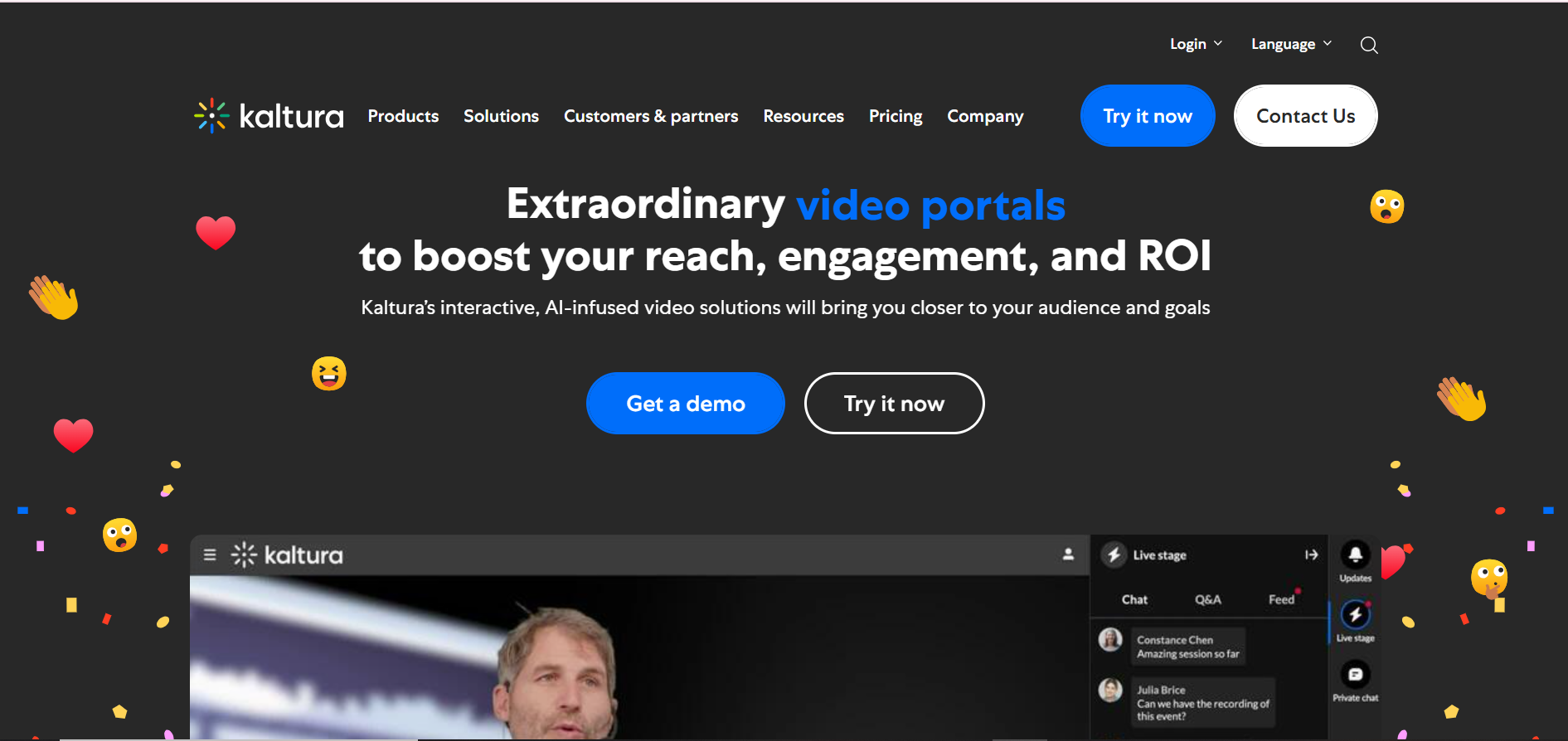
Key Features:
- Supports interactive video ads and branded content.
- Advanced analytics for measuring viewer engagement.
- Integration with various video platforms.
Strengths: Focus on enterprise solutions and video content management.
13. Taboola

Key Features:
- Interactive and engaging ad formats integrated within content.
- Advanced targeting based on user behavior and preferences.
- Comprehensive analytics and reporting tools.
Strengths: Focus on content discovery enhances user engagement.
14. Outbrain
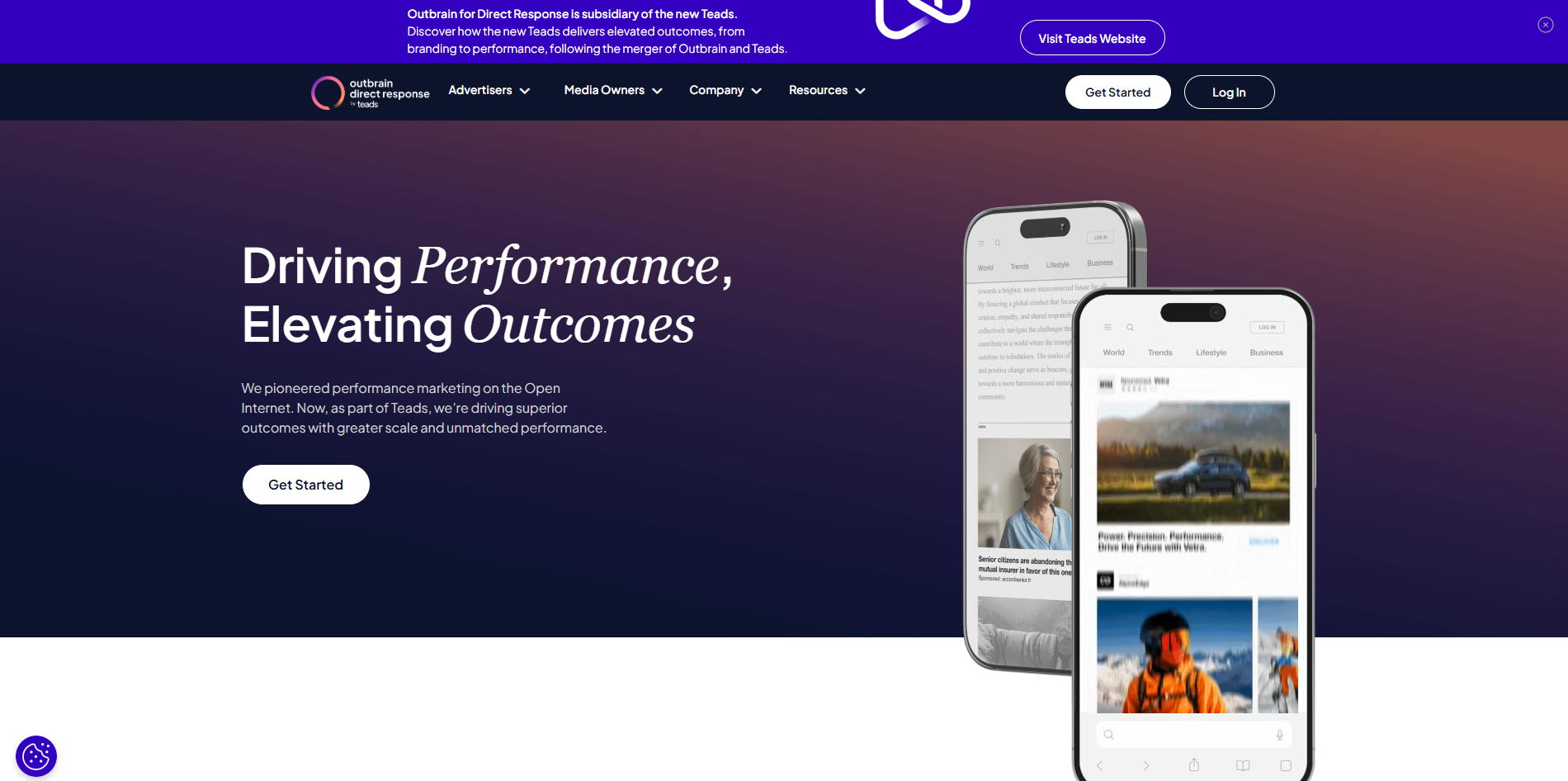
Key Features:
- Interactive and engaging native ad formats.
- Personalized content recommendations based on user behavior.
- Robust analytics for tracking performance.
Strengths: Strong focus on enhancing user experience through relevant content.
15. Vungle
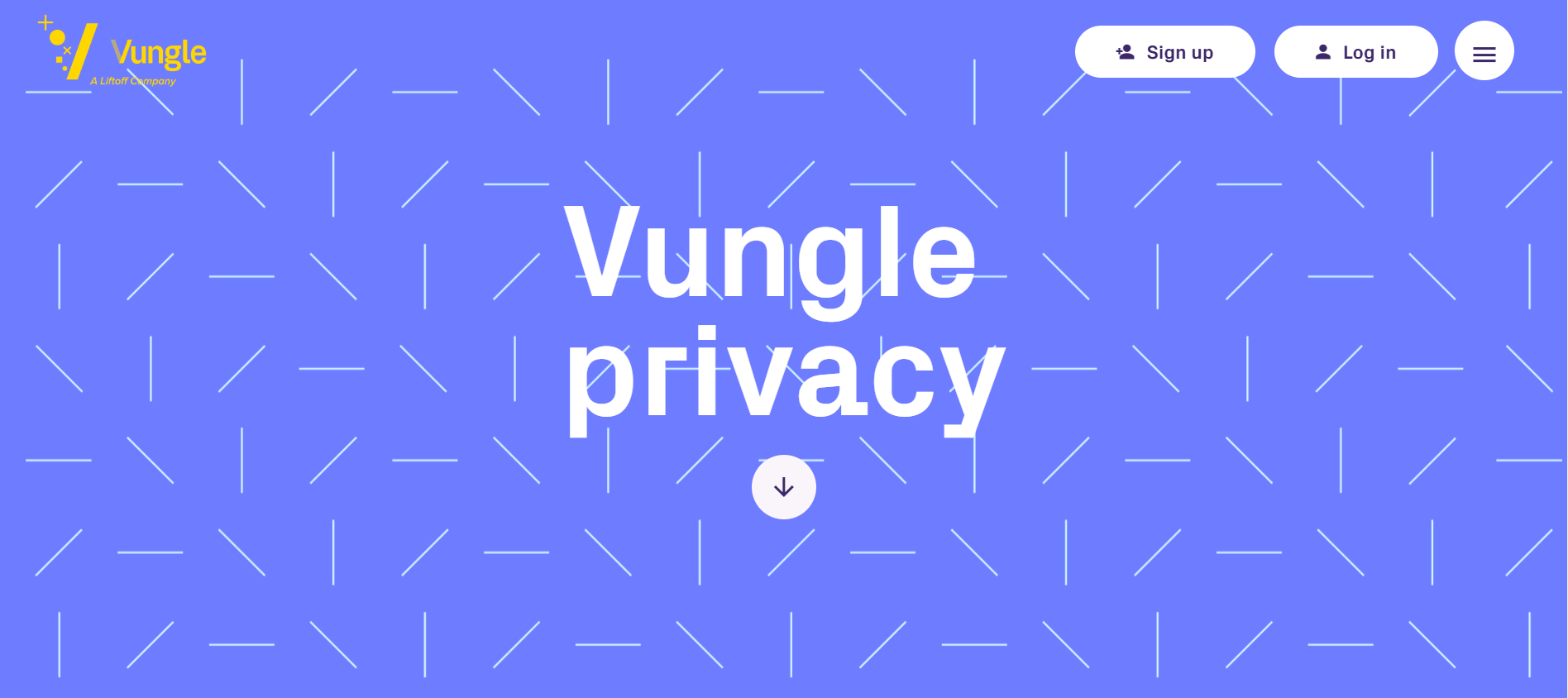
Key Features:
- Engaging video ad formats, including interactive and playable ads.
- Tools for monetizing mobile apps effectively.
- Comprehensive analytics for tracking ad performance.
Strengths: Strong emphasis on mobile engagement and high-quality video experiences.
16. Adform

Key Features:
- Supports various ad formats, including interactive and video ads.
- Advanced targeting and programmatic buying capabilities.
- Robust analytics and reporting tools.
Strengths: Strong programmatic capabilities and extensive inventory.
17. Criteo
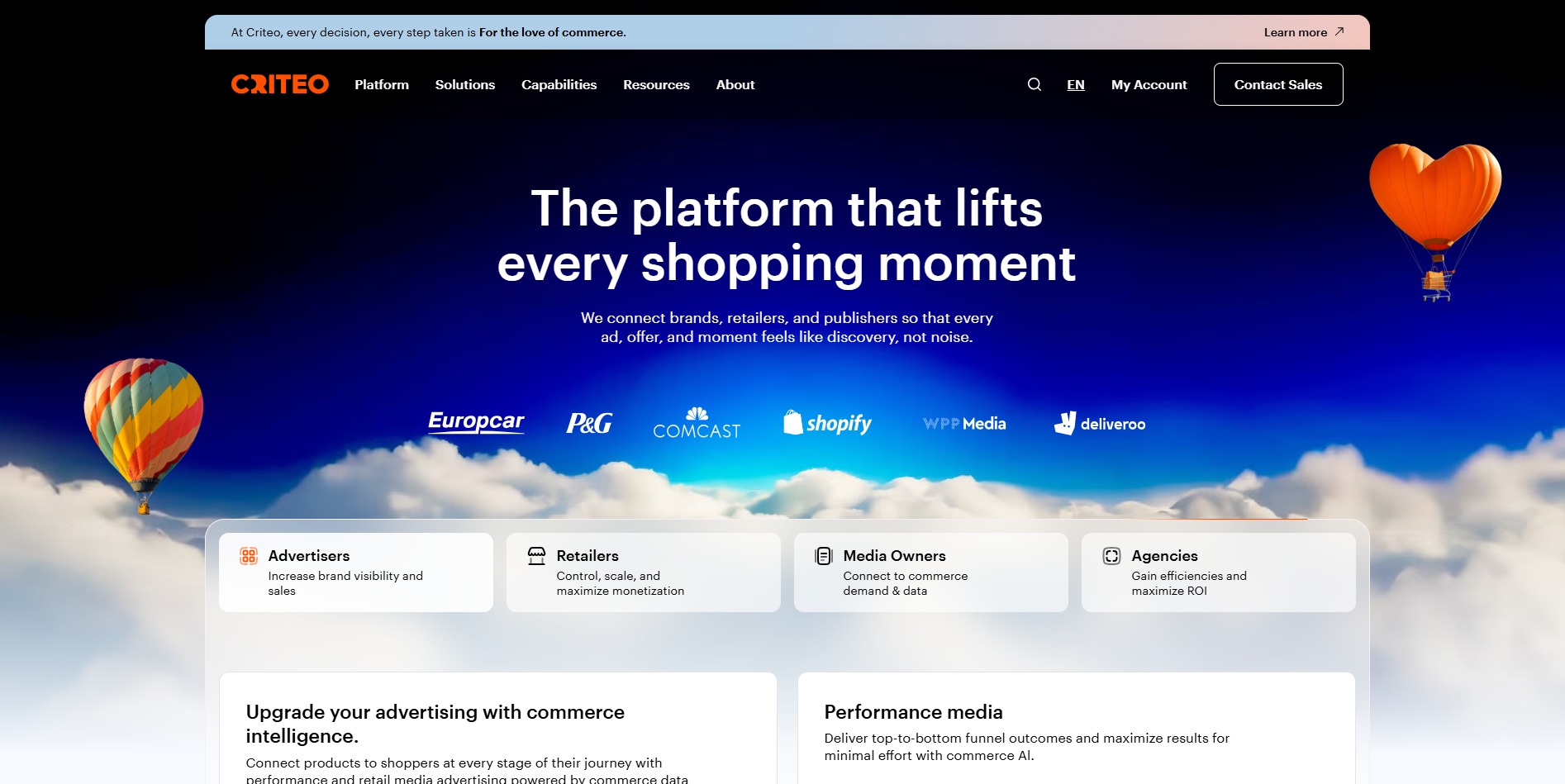
Key Features:
- Dynamic and personalized ads that adapt based on user behavior.
- Extensive targeting options and data-driven insights.
- Comprehensive analytics for measuring performance.
Strengths: Focus on performance and ROI through retargeting strategies.
18. Sharethrough

Key Features:
- Interactive ad formats integrated seamlessly with content.
- Emphasis on user experience and engagement.
- Analytics for tracking performance and user interactions.
Strengths: Strong focus on native advertising enhances user engagement.
Conclusion
The Best Rich Media Ad Networks are revolutionizing digital marketing by combining creativity, interactivity, and intelligent targeting. In 2026, advertisers are increasingly using these networks to craft immersive, engaging campaigns that outperform traditional display ads. Through interactive videos, dynamic animations, and responsive 3D visuals, brands can connect with audiences more effectively and drive meaningful engagement.
As innovation accelerates, the Best Rich Media Ad Networks are expected to incorporate even more AI-driven tools, AR-based storytelling, and programmatic optimization. Marketers who embrace these technologies will gain a powerful edge — achieving higher ROI, better click-through rates, and stronger customer relationships. The future of digital advertising belongs to brands that harness the power of rich media to engage, inspire, and convert.
Frequently Asked Questions (FAQs)
What are the Best Rich Media Ad Networks?
The Best Rich Media Ad Networks are advertising platforms that enable brands to deliver interactive, multimedia-rich campaigns. These networks combine video, animation, and gamified elements to capture attention and boost engagement far beyond what static ads can achieve.
Why should businesses use the Best Rich Media Ad Networks?
Using the Best Rich Media Ad Networks helps businesses create memorable ad experiences that drive higher engagement and conversions. These platforms allow brands to showcase creativity, connect emotionally with audiences, and outperform traditional display advertising.
Which are the Best Rich Media Ad Networks in 2026?
The Best Rich Media Ad Networks in 2026 include Google Marketing Platform, Adform, Innovid, Undertone, and Criteo. These platforms provide advanced analytics, creative flexibility, and cross-device compatibility to help advertisers maximize campaign performance.
Are ads on the Best Rich Media Ad Networks more expensive?
Yes, campaigns run through the Best Rich Media Ad Networks can be more costly due to their interactive and high-quality designs. However, the investment pays off through improved engagement rates, extended view times, and stronger brand recall.
Can small businesses use the Best Rich Media Ad Networks?
Absolutely. The Best Rich Media Ad Networks offer accessible pricing models and easy-to-use design tools. This allows small and medium-sized businesses to run professional, visually appealing ads that attract new customers and increase visibility.
What formats are supported by the Best Rich Media Ad Networks?
The Best Rich Media Ad Networks support a variety of formats, including interactive videos, expandable banners, in-app interstitials, and AR-based creatives. These ads work seamlessly across devices, ensuring consistent performance on desktop and mobile.
How do the Best Rich Media Ad Networks improve engagement?
The Best Rich Media Ad Networks use interactive and visual elements like motion, swiping, and hover effects to encourage participation. This deeper level of engagement keeps users interested longer, resulting in higher click-through rates and conversions.
What is the future of the Best Rich Media Ad Networks?
The future of the Best Rich Media Ad Networks lies in AI personalization, augmented reality, and immersive storytelling. As technology evolves, these networks will deliver even more engaging, data-driven ad experiences that redefine digital marketing success.
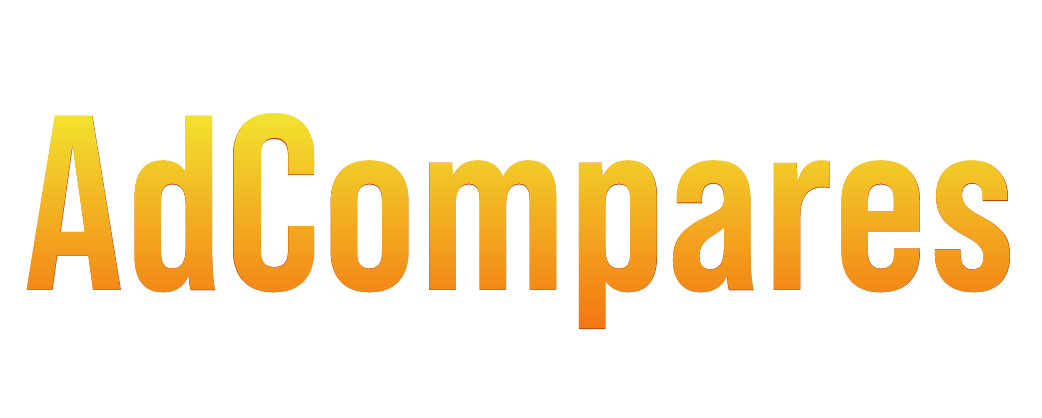

No Comments
After examine a number of of the blog posts on your website now, and I really like your way of blogging. I bookmarked it to my bookmark web site record and might be checking again soon. Pls try my site as nicely and let me know what you think.
Your comment is awaiting moderation.